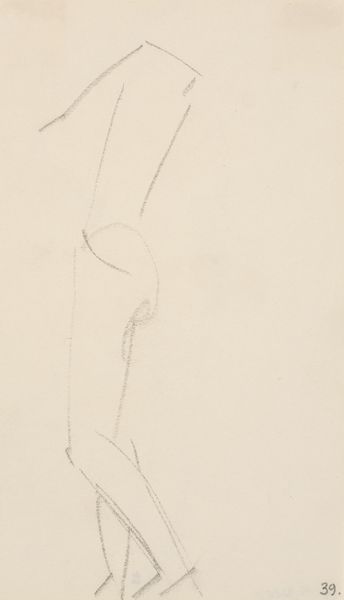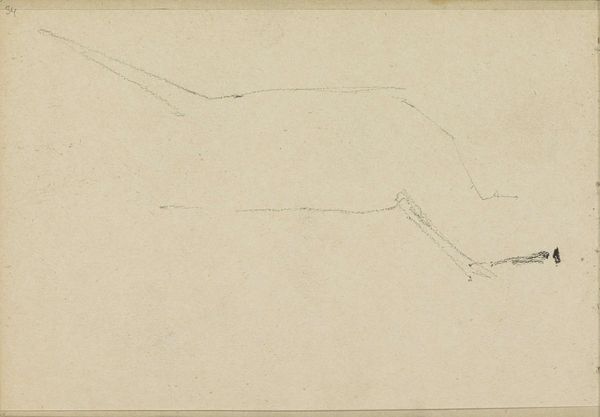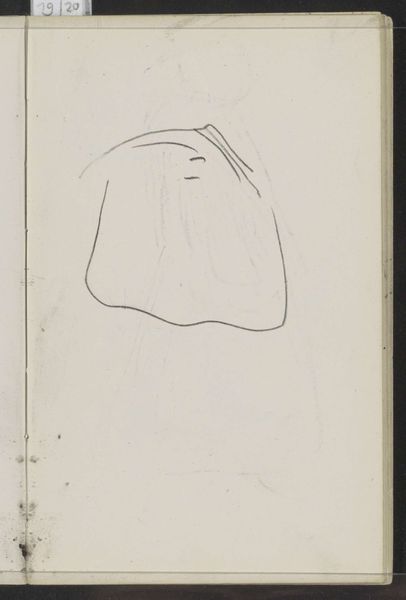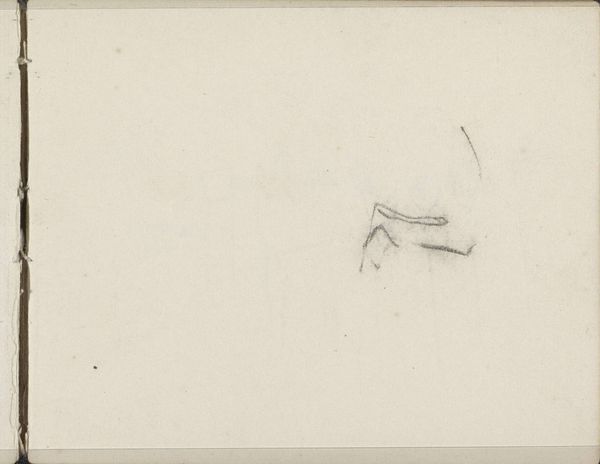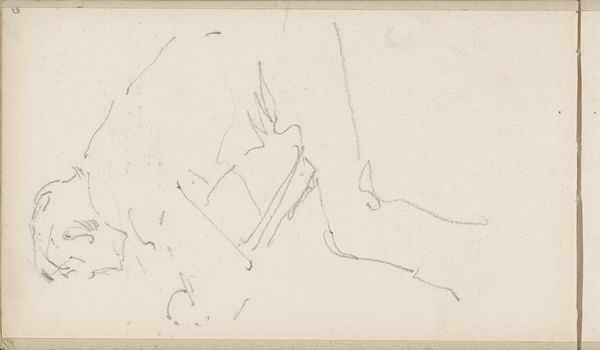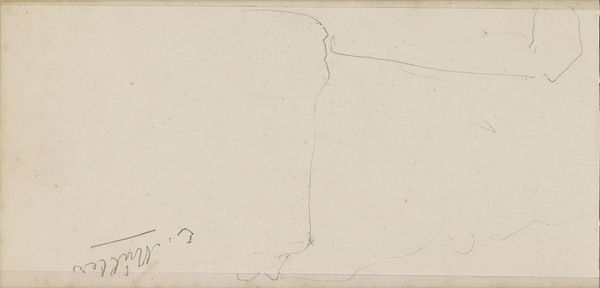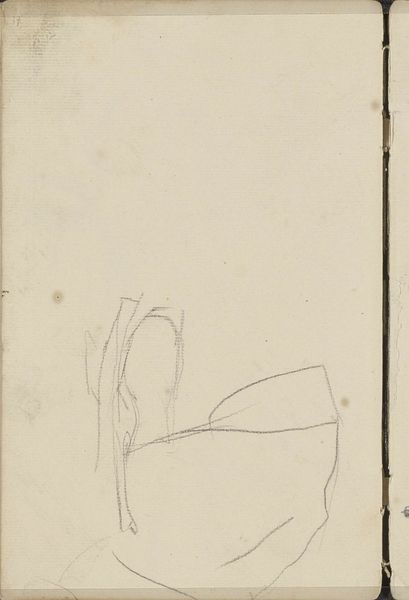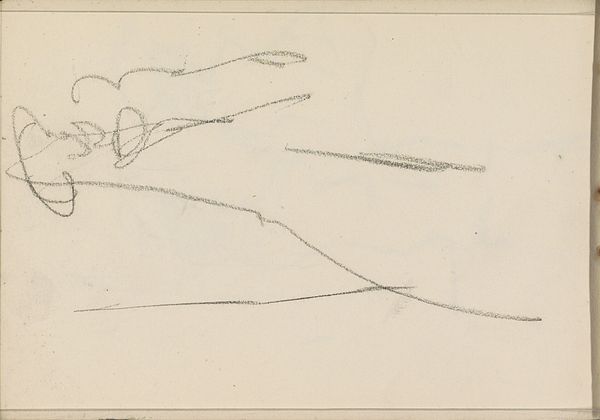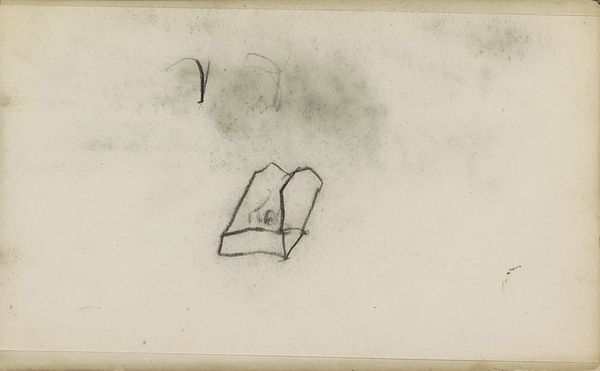
Copyright: Rijks Museum: Open Domain
Editor: This is "Studie," a pencil drawing on paper created in 1896 by Carel Adolph Lion Cachet, and housed at the Rijksmuseum. The simplicity of the line work and the expansiveness of the negative space are really striking. How do you approach a work like this, with its apparent lack of detail or subject? Curator: Its power lies precisely in that sparseness. We must consider the artist's hand, the way the pencil delicately articulates form through line. Note how the subtle variations in pressure and the density of the graphite create a sense of volume and depth. The composition itself is a study in the interplay between positive and negative space, inviting us to actively engage with the act of perception. The artist is stripping down representation to its bare essentials. What is being represented, the ostensible 'subject,' is of less importance than the act of representing it. Editor: So you are saying the "what" is less important than the "how?" Does that elevate the technique over the content, then? Curator: One might say it foregrounds the technique, compelling us to acknowledge the artist’s deliberate choices regarding line, form, and spatial organization. Consider the drawing not as a representation of something external, but rather as an investigation of the very language of drawing itself. It is about exploring the essence of form, line, and the interaction between them, leading to a kind of abstraction. Editor: I see what you mean; it's a deconstruction, in a way. I was initially puzzled by the drawing’s simplicity, but I now appreciate how it directs my attention to its core visual elements and the process of mark-making. Curator: Precisely. And through that close observation, we move beyond mere recognition and begin to understand the fundamental building blocks of visual representation.
Comments
No comments
Be the first to comment and join the conversation on the ultimate creative platform.


